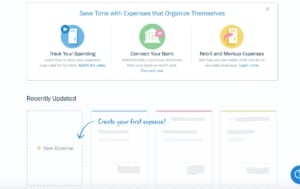Fragrances and aromas can bring us back to our favorite moments. Whether under the protective charm of cinnamon and pine sap during the holidays or the essence of a seaside town and wet sand, a candle never fails to brighten even the most silent and grey days. The value and power of authentic fragrance are well understood by the team at Frères Branchiaux, a family-owned candle company currently based in Metro DC. In celebration of the Frères Branchiaux team’s 3rd place win in the Building Resilient Businesses contest, we at Kapitus had the pleasure of learning more about the inspiring story of three brothers and their parents who built an eco-conscious vegan candle company from the ground up.
Exclusively using soy and coconut wax, each Frères Branchiaux candle is hand poured with artisanal care. It is no exaggeration to say that lighting a Frères Branchiaux candle with your family is supporting a small business and strengthening a fragrance revolution calling for high-quality, natural products that enhance our own living.
Building a Business
The modern-day family business can be much more than a classic mom-and-pop shop, as exemplified by Frères Branchiaux. Let’s instead call it a brother-brother-and-brother shop; this is because the Frères Branchiaux story started with three brothers Colin, Ryan, and Austin who were faced with a big question. Their mother told the boys that they could make more spending money by either getting a job or starting their own business. Thank goodness they chose the latter.
Celena Gill (mother of les Frères Branchiaux) explained that on top of making high-quality candles, she and her team faced several unexpected challenges when starting their business. “We had no idea of how to run an e-commerce business nor did we have any type of marketing plan,” explained Celena. “Most of what we learned was on Google and YouTube University. After we figured out how to make candles, we had to figure out how to market them. Because the boys were homeschooled, we were able to vend in major cities all around the country. We were able to home in on our customers and determine our target market. Our challenges helped us learn who our customer was and how to sell to them.”
Growing a Business
The Frères Branchiaux story is emblematic of a universal change in how our small businesses interact with their communities. By not engaging in ecommerce, small businesses don’t simply lose a revenue stream; they are shortening the potential of their community. Frères Branchiaux took this guiding concept in stride and even scored distribution for their candles in major retailers like Whole Foods and Target.
Any small business seeking national distribution is aware of the pitfalls and sometimes aggressive requirements from big-name brands for distribution, but Frères Branchiaux had some key advice for small business owners hoping to see their products on more shelves: “Start networking and getting connected to buyers. Also, ask other business owners in Target about their process, their journey, and if they can share their buyer contacts. Apply for any local vendor programs or accelerator programs that would help you gain entry into department stores. Also, make sure that your products are retail-ready—have proper packaging, UPC codes, ingredients (if necessary) and directions. Our CEO mom, Celena, leads the way in developing relationships and connections to launch in more retail stores.”
Building a Niche
Candles, like coffee or deodorant, are a market full of existing competition and big names who hold massive sway. From Yankee Candle to Harlem Candle Company, it’s clear that candle companies need a strong identity that consumers can identify with. Candles, by nature, are luxury products, so people need to be genuinely compelled to choose one candle over another. This is another fact Frères Branchiaux took to heart when building their business and brand.
Frères Branchiaux is family-owned, vegan, eco-conscious, and community-minded. And further, the team at Frères Branchiaux lives by these guiding principles. They make decisions not based on trend-chasing, but personal inspiration. That inspiration is more than present for Frères Branchiaux: “We care about the air quality in our home and wanted to create candles that would be as ‘clean’ as possible to everyone’s home environment. Austin, our youngest co-founder, has asthma so we had to make sure that any lit candle has the best ingredients for his health. Soy candles are vegan, clean burning, and emit a better mix of fragrance and wax than paraffin candles.” In an ocean of impersonal brands, the value of personal inspiration cannot be overstated.
Further, consider the Frères Branchiaux recycling program. Co-founder Ryan explains that. “We are very invested in using renewable resources and reducing our carbon footprint. Since we use glass jars, we thought it would be best to start a recycling program to encourage others to do the same.” After someone entirely burns a Frères Branchiaux candle, they can package up and ship the glass container to their Maryland base. Plus, processed returns can net the sender a $1 coupon for use at pop-ups or the Frères Branchiaux online store.
Building a Future
Thanks to the Building Resilient Businesses Contest, Frères Branchiaux took home a $20,000 prize to continue their mission of clean-burning, hand-poured candles for all. When asked what is next in store for les Frères Branchiaux, the team mentioned some major plans: “In 2023, we are launching in Sur La Table in February, pet products on HSN, and have collaborations with creative brands. We are also opening our flagship store in Oregon next fall. Our oldest co-founder, Collin, will be entering the University of Oregon in the fall as a starting cornerback on the football team—so we wanted to open one of our flagship locations where we would spend most of our time. “
Those interested in getting their own Frères Branchiaux candles can find them through the company’s online store or at one of several national supermarkets. And keep an eye out for news on the new flagship and more on Frères Branchiaux team’s social media.
Learn the stories of all of our small business winners:
BRB Stories: After Devastating Setback, Play Pits Takes First Place in Kapitus’ BRB Contest!
BRB Stories: Relying on Faith and Passion for Business Success
BRB Stories: Creating Libraries-worth of Unforgettable Memories!
BRB Stories: Healing Relationships with Body & Fitness
BRB Stories: Empowering a New Generation of Swimmers and Thinkers























